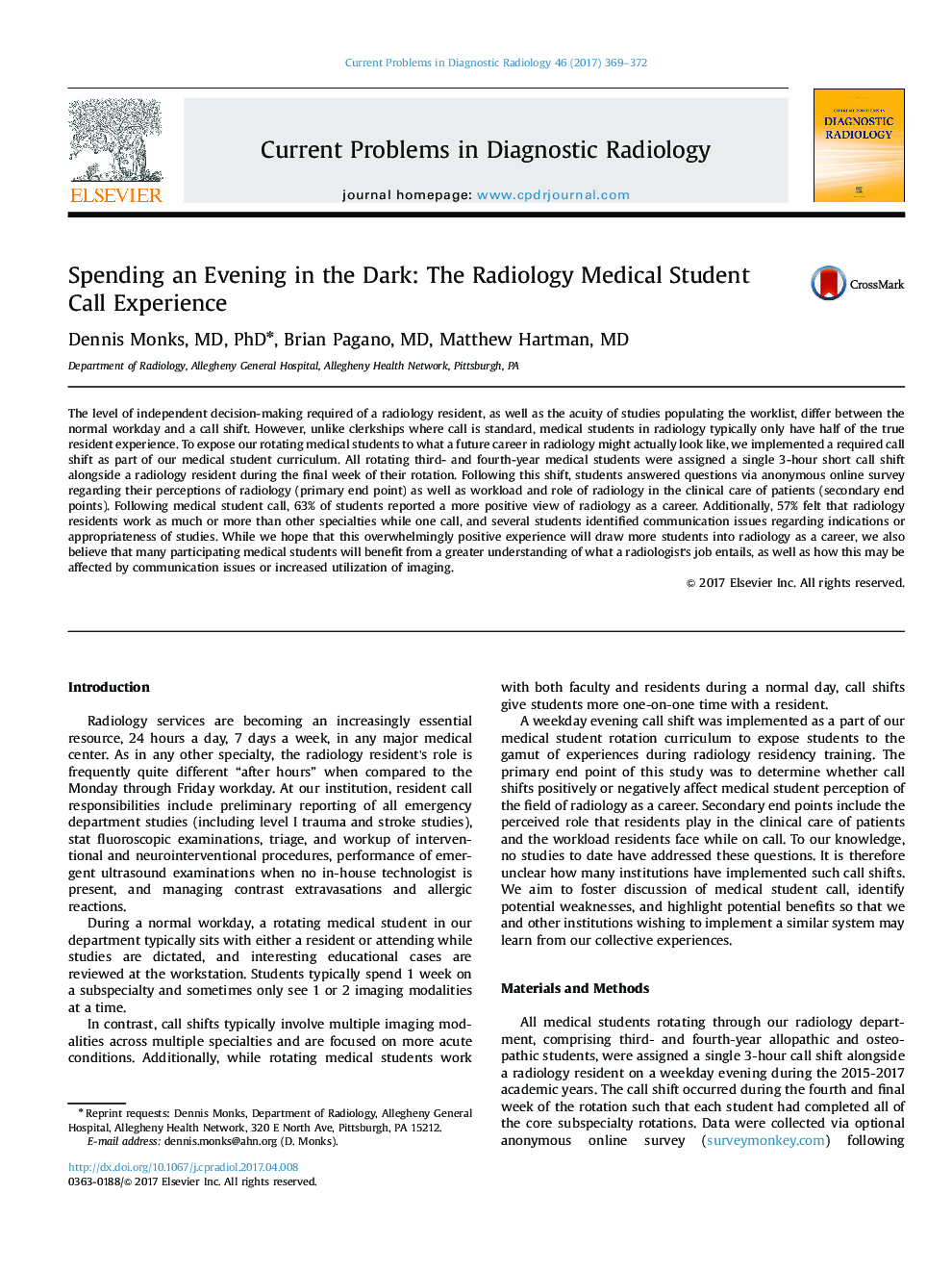| Article ID | Journal | Published Year | Pages | File Type |
|---|---|---|---|---|
| 5725911 | Current Problems in Diagnostic Radiology | 2017 | 4 Pages |
The level of independent decision-making required of a radiology resident, as well as the acuity of studies populating the worklist, differ between the normal workday and a call shift. However, unlike clerkships where call is standard, medical students in radiology typically only have half of the true resident experience. To expose our rotating medical students to what a future career in radiology might actually look like, we implemented a required call shift as part of our medical student curriculum. All rotating third- and fourth-year medical students were assigned a single 3-hour short call shift alongside a radiology resident during the final week of their rotation. Following this shift, students answered questions via anonymous online survey regarding their perceptions of radiology (primary end point) as well as workload and role of radiology in the clinical care of patients (secondary end points). Following medical student call, 63% of students reported a more positive view of radiology as a career. Additionally, 57% felt that radiology residents work as much or more than other specialties while one call, and several students identified communication issues regarding indications or appropriateness of studies. While we hope that this overwhelmingly positive experience will draw more students into radiology as a career, we also believe that many participating medical students will benefit from a greater understanding of what a radiologist׳s job entails, as well as how this may be affected by communication issues or increased utilization of imaging.
